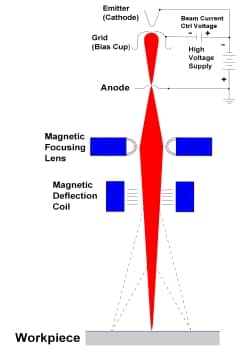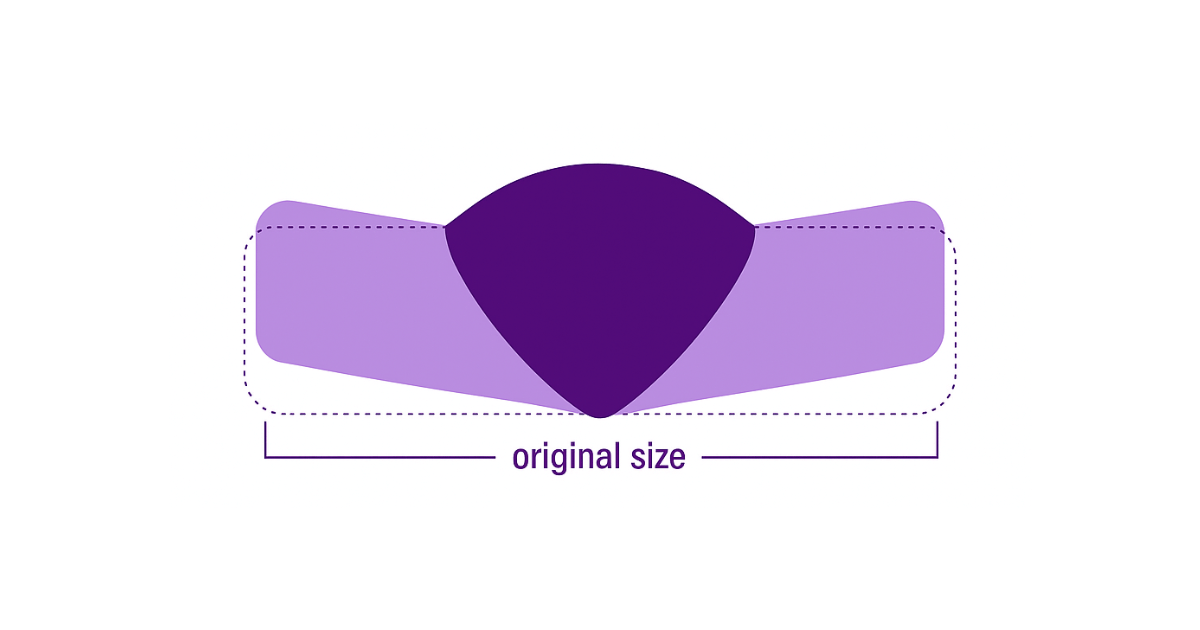Electron Beam Welding (EBW) has evolved to become a highly effective welding technique for precise welding of complex parts in a variety of industries as diverse as high volume part production in the automotive industry to single batch processes in the aerospace industry. For such manufacturers, the welding process must meet very high quality standards that have become the norm in their industry.
Technology Overview: Electron Beam Welding (EBW)
EBW is an automatic welding process in which a focused beam of high speed electrons is applied to two materials to be joined together. The workpieces melt and flow together as the kinetic energy of the electrons is transformed into heat upon impact under vacuum conditions to prevent dissipation of the electron beam.
To create the focused beam of electrons, a heating current is passed through a filament (or cathode) that causes it to emit electrons that are accelerated by applying a high voltage to the filament. The electrons are then attracted to an anode, or ground potential electrode, which has a hole in it through which electrons are allowed to pass as a steady collimated stream towards the workpiece. As a final step, the beam of electrons travels through a focusing coil, or electromagnetic lens, so that the beam can be focused to a fine point in order to achieve sufficient power density to melt and weld the workpiece.
Only certain materials can be processed by an electron beam in a vacuum, however, such as steel, aluminum and a few other materials with lower vapor pressure at their melting temperature.

Figure 1: The Electron Beam Welding Process
Essential advantages of EBW
Compared to welding with conventional open arc equipment, Electron Beam Welding provides numerous benefits to fabricators, including:
- The ability to penetrate very fast into almost any metal, producing a deep but narrow weld that provides a very localized heat source, minimizing any deformations of the workpiece.
- Filler material is usually not required for the welding process so that the metallurgical properties of the workpieces do not change.
- There is no significant beam reflectivity from any metal surface on which EB works, therefore most of the energy makes its way into the material.
- Ability to provide precise closed loop power control across a range of
One of the issues with EBW is the challenge of monitoring the process while the electron beam is active. The use and integration of a Weld Camera can greatly improve the productivity and efficacy of the process.
Monitoring the Weld Bead with Xiris Cameras
Because the electron beam melts the workpieces during the welding process, the workpieces re-radiate so much infrared and visible light energy that it is not possible to see the welding process with a regular camera. By using a High Dynamic Range Weld Camera with the ability to see an enormous range of brightness, such as the Xiris XVC-1000, the operator is able to properly monitor what is going on during the EBW process. This allows the operator to control material inputs and process parameters such as the alignment of the weld head to the seam or spot to be welded, or, to monitor the size and shape of the weld pool in real time. Process and quality control can be improved because the operator can continuously check the weld parameters prior to catastrophic errors developing.
Conclusion
To maximize efficiency of Electron Beam Welding processes, a Weld Camera with High Dynamic Range imaging capability is an essential tool for operators to observe the weld process before it moves out of control and causes welding defects in the final product.
Graphic Courtesy of http://www.ptreb.com.






